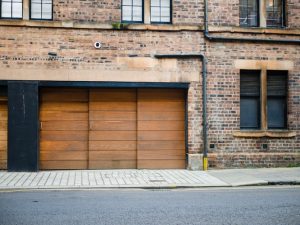Building insurance provides financial protection for the physical structure of your property. If your home or other property was completely destroyed – or so badly damaged it had to be rebuilt – then buildings insurance should reimburse you up to the full cost of your home or property.
But that’s an extreme scenario. Your house can also be affected by all sorts of smaller problems like leaks, damage from break-ins and subsidence. These are also events that should be covered by your buildings insurance policy and so your repair costs should be covered.
Usually people insure both their buildings and contents on the same home insurance policy. A combined buildings and contents home insurance policy can be great value and provides cover not only for your building but also your possessions in the home.
However, should you wish you can also get buildings insurance on its own, although that means your home contents would then not be covered. That may be useful if you don’t feel you have enough possessions worth insuring. It’s fair to say that very few households in the UK have such a minimalist mindset, but for those who do a separate building insurance for the home could be cheap and effective.
At Emerald Life we offer both combined buildings and contents insurance as well as standalone buildings insurance. Just visit our fast online quote form and select which insurance cover you want when asked.
If you have any questions or concerns, or have a more complicated insurance situation, then email or call us today to discuss your requirements. We are not authorised to give advice but can certainly help you understand the policies we provide.
Table of Contents
Buying With a Mortgage
Even if you don’t have many contents to make home insurance worthwhile, buildings insurance is usually a requirement of your lender if you are buying a property with a mortgage.
In this case you will probably need to arrange buildings insurance that starts on the date of exchange to ensure complete cover. Even if you are not buying with a mortgage this is still a valuable exercise as the building becomes your liability on the date of exchange even if you haven’t moved in yet.
That means any accidents that occur such as flood, fire or burglary are your responsibility. In a nightmare scenario your home could potentially be completely destroyed before you have even moved in. This is why buildings insurance is so important.
Read more about about when to get insurance when buying a house here so that you get the right home cover when you need it.
How Much Buildings Cover Do You Need
When looking for home insurance you need to know the total sum insured you need. For buildings insurance that means finding out your rebuild value of your property. When asked how much buildings cover you require you should match that to your rebuild value – also known as your reinstatement cost.
This is how much it would cost to rebuild your property if it were completely destroyed. Note that this is not the same as the market value of your property as you own the land and only need to consider the cost of labour and materials.
There are various ways to find your rebuild cost but you can also try an online calculator from the Royal Institute of Chartered Surveyors. You can read more about finding your house insurance rebuild value here.
Accidental Damage Cover
You can also get optional accidental damage cover for your buildings. This provides cover for one-off unforeseen accidents that mean you caused damage yourself – like if you damaged a window. This can normally be found for only a small extra cost.
Damaged caused by yourself is normally an exclusion of insurance policies to avoid fraud and so you are usually unable to make a claim. But accidents do happen and can be costly and so this can be a valuable add-on to your home cover.
At Emerald Life you can go through our fast online quote form and when it asks if you want accidental damage cover for buildings simply tick yes if you want this added to your quote.
Our accidental damage cover also includes cover for some damage caused by pets. You can read more about home insurance accidental damage cover and how we can help here.
What Does Building Insurance Cover?
Buildings vs Contents
Buildings insurance covers the physical structure of your property such as the walls, roof, floors and also fixtures like sinks. Generally, if the house were turned upside down anything that fell out would be regarded as contents while anything that stayed would be part of a buildings policy.
The vast majority of consumers go for a combined buildings and contents insurance policy as that is usually cheaper than buying the two policies separately. That means your contents can also be covered at low cost. These days the need for contents insurance is greater than ever thanks to households getting more and more expensive gadgets that increase the total value of contents they own.
Burglary and Vandalism
It is easy to think that buildings insurance will only cover events like leaks and fire. However, there are plenty of other scenarios you should prepare for. For instance, with burglaries we are normally more concerned about the items taken which would come under contents.
However, burglaries often involve a lot of damage caused to the home. Broken doors and windows can be very expensive to fix. Similarly acts of vandalism within the property can be devastating. These aspects would come under buildings cover and may be written as “malicious damage” in your policy wording.
Alternative Accommodation
Don’t forget that a good buildings insurance policy will also pay for alternative accommodation if your home is made uninhabitable. Imagine the stress of a major incident like a flood and while you can make a claim for your financial losses you are are still in a situation of your home being in disarray.
Will you be able to sleep and live comfortably while the damage caused is repaired? Buildings insurance cover is really more about looking after you and the people you live with rather than just your physical house.
Property Owner Liability Cover
You should also not forget about property owner liability cover and make sure this is provided with your home insurance. Liability cover means if you are sued because someone is injured by your property then the insurer can help with legal fees. That could be as simple as the postman tripping over a loose paving slab or a falling roof tile landing on a passing pedestrian. The legal costs involved in these rare but perfectly plausible scenarios are huge. Not only is there the potential settlement cost, but all the legal costs required to reach that point.
How Much is Building Insurance?
A combined building and contents insurance policy is usually a very good value product, especially comared to buying the two home insurance products separately. However, buildings insurance for home cover is not normally expensive. Generally a standard buildings and contents policy will cost about £200, but this can vary significantly based on your property, claims history and a wide array of other factors.
A buildings insurance policy on its own can normally be found for about £100 – 150. Some insurers also offer monthly payment installments but you are more likely to save money by paying upfront if there is an additional charge for monthly payments.
Make sure to check the exclusions of any policy you are interested in. In particular, budget buildings insurance cover that might rank high on comparison sites are likely to cover less than a more comprehensive policy.
Who Pays Building Insurance Landlord or Tenant?
If you are a tenant then buildings insurance cover is the responsibility of your landlord. However, you should consider if you need a contents only policy for the items in the home that you own.
If you are a landlord then buildings insurance is your responsibility. However, standard home insurance will not cover you as a landlord. Specifically, if you charge rent and are not living at the property then you need landlord insurance.
Landlord insurance usually focuses on buildings insurance rather than contents because as a landlord you probably don’t own much at a let property. However, some landlord contents cover is still a good idea if you have items like furniture, curtains and carpets which are your contents.
Landlord insurance takes account of the additional risk posed by having tenants and will also include details like who your tenants are. This again we can arrange at Emerald Life with comprehensive landlord policies that include £5000 of landlord contents cover free.
If you are letting out a leasehold flat then you should check your lease to find out your insurance responsibilities. Usually buildings insurance is paid for by the freeholder and then charged to leaseholders through the service charge. But this is not always the case and so you should check your lease and the freeholder if needed.
Freeholder Buildings Insurance
If you are the freeholder of a maisonette or a block of flats then you may be in need of buildings cover for your situation. Joint freeholder buildings insurance can also seem complex if the freehold is split between a partnership rather than a single person, resident’s association or limited company. Effectively this is still a landlord policy but you need to make sure all relevant freeholders are named on the policy so that in the event of a claim the payout is distributed appropriately.
At Emerald Life we insure plenty of blocks and other properties leased out and so are experienced in working with special situations like this. Call us today to discuss your requirements.



